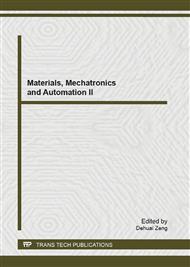p.382
p.387
p.391
p.399
p.403
p.408
p.416
p.422
p.426
Stand-Alone Super Capacitor Charging System with the Design of Starting Protection
Abstract:
This paper focuses on analyzing the problem that occurs when running a stand-alone super capacitor charging system, which is capable of working independently without relying on any external power supply. Components are easily damaged due to overloading. This occurs at the moment when the stand-alone super capacitor charging system switches on. To solve the problem, this paper not only finds the reason why the inductor current of the boost converter saturates at the switching moment, but also analyzes the waveforms of the inductor current at the switching moment. Finally, the verification of the circuit characteristics with an external stimulation was carried out with both experiments and simulation.
Info:
Periodical:
Pages:
403-407
Citation:
Online since:
August 2013
Authors:
Price:
Сopyright:
© 2013 Trans Tech Publications Ltd. All Rights Reserved
Share:
Citation:


